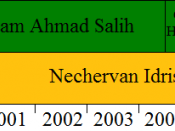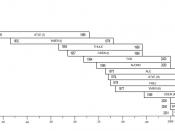According to Chapter 8 in the book, "Critical Thinking," by Gary R. Kirby, Jeffery R. Goodpaster, and Marvin Levine organizing one's thoughts into logical orders can help one to solve problems or form conclusions. The chapter describes the different ways in which one can organize their thoughts by taking into consideration the following: origins of order, different natural and mental orders, proper steps in organization, and methods of using orders.
The first element of understanding organization involves thinking in relation to the origins of order. The definition of origins of order can be described as where the thought or feeling is coming from or to ask a person what it is that makes a person feel a certain way about a topic. Discovering the origin of the order of thinking an individual follows; allows a person to align their thoughts in the natural way they were intended.
Understanding the natural and mental orders is the next aspect of organizing a person's thoughts. The four major natural orders are described in chapter 8 as: topical order, analogical order, chronological order, and casual order (Kirby and Goodpaster, 1999). Topical order involves the natural way that things within the universe react to one another. For instance, the earth's gravity spins the moon around it, water flows downhill, or heat rises in the air are good examples of topical order. Analogical order has to do with the similarities we find in both objects and language. This order involves the process of clustering, or grouping the similarities of either objects or language. Chronological order is the way in which we order our thoughts according to time. We use the chronological order when we want to tell what happened, it is like telling a story of how God created Adam and Eden.


